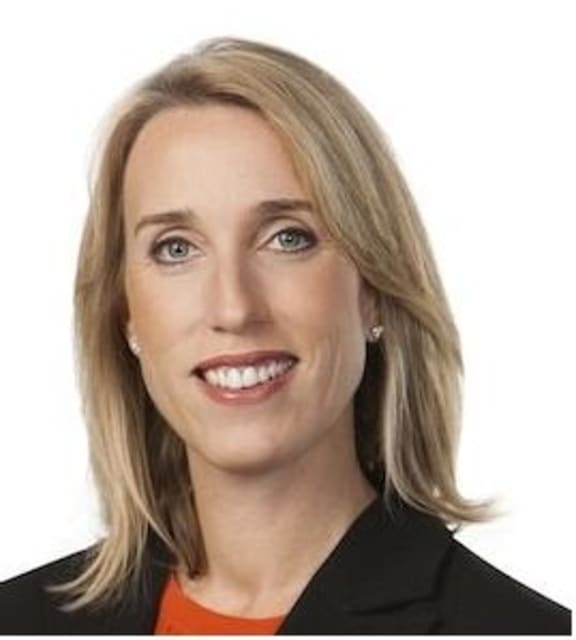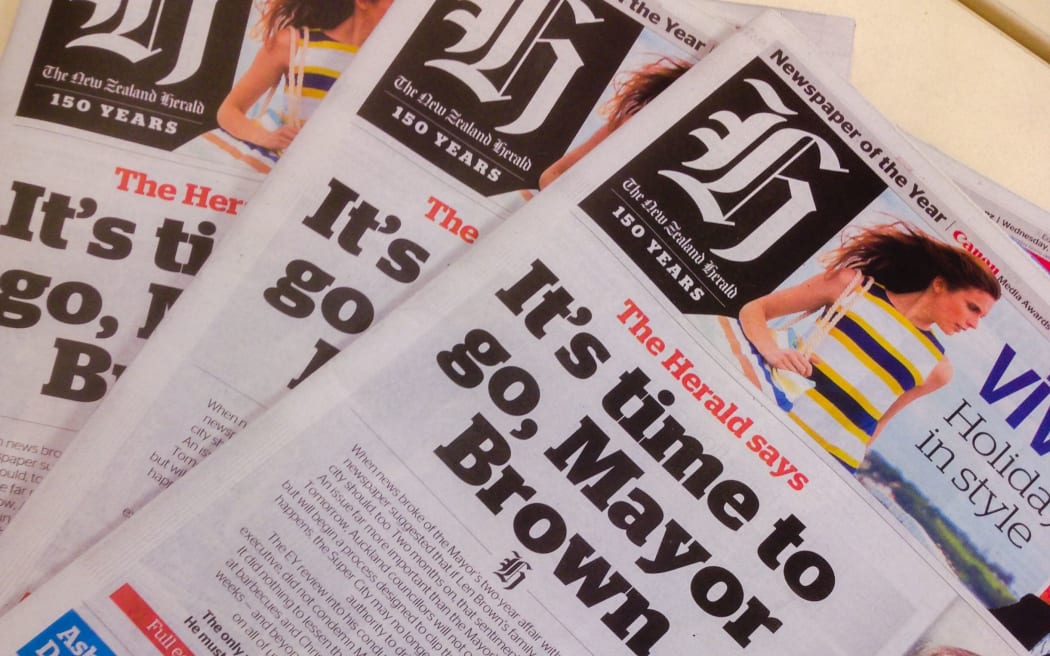The departing boss of one of New Zealand’s biggest media companies fundamentally changed its print and radio outlets over four years in charge. Mediawatch looks at what ‘Hurricane Jane’ leaves in her wake.
The chief executive of media company NZME Jane Hastings resigned this week. She will leave in April and be replaced by NZME’s chief financial officer Michael Boggs. NZME owns The New Zealand Herald, several other North Island newspapers, The Radio Network (TRN) chain of radio stations and the iHeartRadio online platform.

Jane Hastings Photo: Linkedin
After running entertainment and cinema businesses in Australia and New Zealand, Mrs Hastings joined what was then APN New Zealand in May 2012 as the chief executive of its radio network TRN. Her appetite for change earned her the nickname ‘Hurricane Jane’ and in May 2014, she was appointed overall chief executive at APN. For the first time, the New Zealand Herald had a boss from outside the news business.
Hurricane blows in
Under her leadership, APN became New Zealand Media and Entertainment (NZME) in 2014, one company combining its radio, newspaper and online operations. NZME also sold all its newspapers in the South Island. She also drove the creation of a single fully-digital NZME news centre in Auckland for the company’s journalists, which opened last November.
“The heartbeat of the newsroom that we’re moving to is seven minutes, 30 minutes, 24 hours: seven minutes for digital, 30 minutes for radio and 24 hours for the paper the next day,” she said at the time.
Mrs Hastings admitted that not everyone inside the company was behind her plan, but that wouldn’t stop it.
"I would say that we've got 50 percent on board, and 50 percent who are not on board. But we're really clear on where we're heading - and we're inviting people to sign up. If they don't want to sign up, there's a big shiny bus outside. It's heading in a different direction and we wish them all the best."
News no longer the core
Former New Zealand Herald editor-in-chief Gavin Ellis warned the company was moving away from having “journalism at its core” and towards a heavier diet of entertainment. 'Clickbait' stories and celebrity news have pride of place on The Herald's website and news app these days, and a greater presence in The Herald's print edition.
Personalities from NZME's radio stations have also been given more exposure in The Herald, prompting one Herald journalist to tell Mediawatch last year that the paper was "becoming a brochure" for its owners' other brands.
In 2014, Mrs Hastings told Mediawatch editors were not under orders to publicise the company or its people.
"To grow a news audience it's got to be independent and it's got to be credible. We aren't replacing the credibility of journalists and opinion leaders in the front sections of our newspapers, just making content more accessible elsewhere. There's a big difference between the front and the back sections".
Critics said integrating the radio news and online operations would homogenise and weaken media outlets with strong and established reputations, and possibly even hasten The Herald’s demise.
But Mrs Hastings told Mediawatch in 2014 her experience in the cinema business taught her new things on the market didn’t always make older ones obsolete.
“If you’re going on a first date you go to the movies to have something to discuss later. If you have children and you want three hours of silence you go to the movies, even though you can access that content anywhere,” Mrs Hastings told Mediawatch.
Have a look at cafes on a weekend morning. People are still turning the pages of a newspaper. Convergence is important and it is about delivering the content in any way your consumer needs it, but in the near term I don’t think it will take over completely.
Going to market?
Throughout her time at NZME it was widely believed its owners wanted to float the company on the stock exchange, but it couldn’t because investors didn’t think it would make more money from online content. Its major rival in New Zealand publishing - Fairfax Media - has abandoned plans to charge users online.
“They are locked in a death spiral because they won’t charge the public,” business analyst Rod Oram said last year. "NZME wants to, but it has yet to do so because Fairfax says it won’t. Instead the two chains eke out their media revenues by selling things to people such as goods, services and events,” said Rod Oram.
Mrs Hastings told Mediawatch last year the company was ready to put up a paywall which would make online users pay for NZME news and content, but the company had not “turned it on”.
“We’re still assessing what’s right for this market recognising New Zealand is different. The only source of money is not from digital subscriptions,” she told Mediawatch.
When the APN parent company in Sydney announced full-year results there last month, it confirmed the planned float was still not a goer. It cited a poor advertising market in New Zealand, though recent survey results were bad for NZME’s previously more profitable radio stations. This may be of greater concern to the top brass, still dealing with the costs of creating the new digital-first news HQ.
Cutting costs in NZ this year will be a priority for the new NZME boss Michael Boggs, currently the CFO.
This week The NBR reported that NZME aims to shed another $10 million of costs this year. $2 million of these savings will be from newsroom staff costs, including the NZ Herald’s contributors budget being slashed by 25%, the NBR said.
These problems and other big ones facing an in industry fighting for survival in the internet era, now pass to jane Hastings' successors.

The New Zealand Herald Photo: RNZ
The audience of the future
Those successors will also have to attract people who are less interested in the sort of news and radio content the company has produced in the past.
In January, Mrs Hastings told media industry website stoppress.co.nz the "the people you are trying to communicate with are on fast forward".
The next generation are all about screens—all screens, not just mobile. They rely on short-form relationships, they have shallow text and direct message chats with their friends often in less than the 140 characters, they constantly use emoticons to express how they are feeling, they snack at content all day, they have short attention spans and they are global consumers not necessarily even aware of who the latest local television stars are.
- Jane Hastings
Having put NZME on the fast track to a converged and digital future, the woman who cut her teeth on cinema screens won't be around to see if that appeals to the fast-forward generation, hungry for content on far smaller screens.

